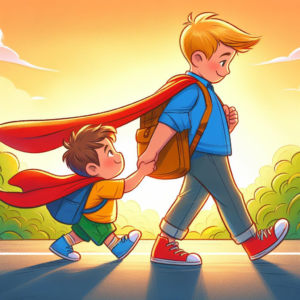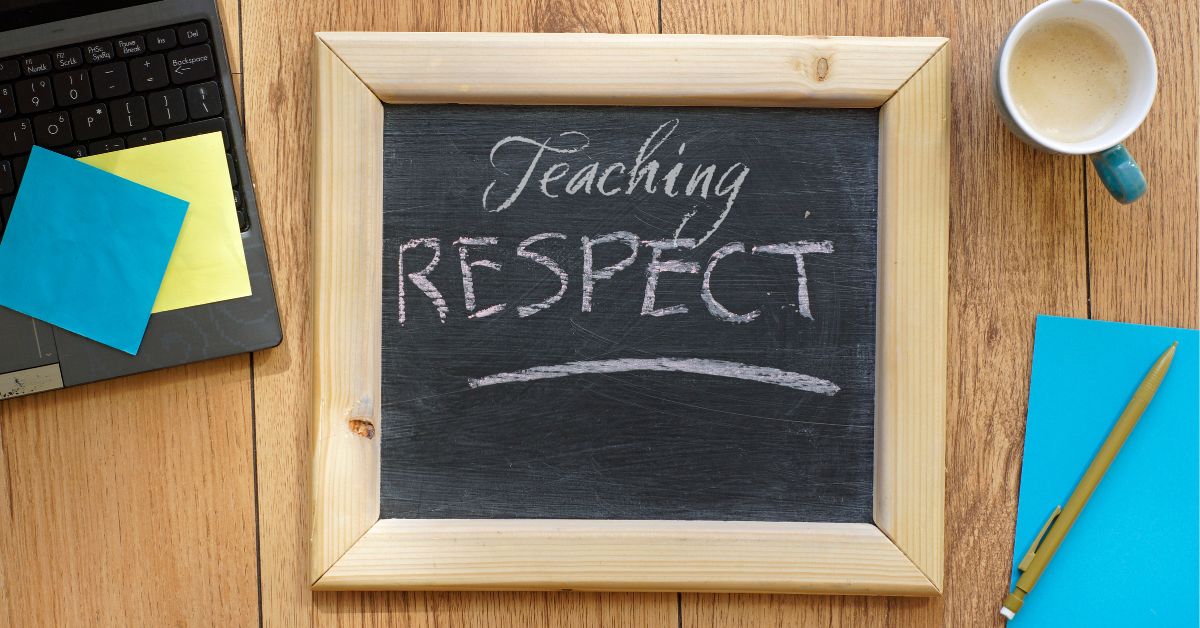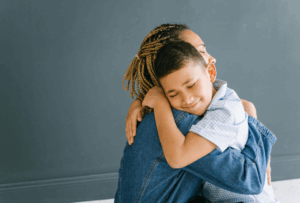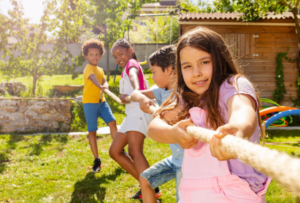Teaching children respect during their elementary school years is crucial because they’re already navigating social interactions, forming values, and shaping their attitudes toward others. We define respect for children engaged in the Charity for Change Program as “Treating others the way you want to be treated.” Respect is a fundamental character trait for healthy relationships, societal cohesion, and personal growth. This article offers seven ideas for parents and educators looking to teach children how to show respect.
Why Teach Children Respect?
Teaching respect to elementary-school-age children is essential for several reasons:
- Promotes Positive Relationships: When children learn to respect others, they are more likely to communicate effectively, cooperate, and collaborate with peers, teachers, and family members.
- Develops Empathy and Understanding: Respect cultivates empathy by encouraging children to consider the feelings, perspectives, and boundaries of others. It nurtures tolerance towards diverse backgrounds, cultures, and viewpoints.

- Builds Self-Respect: Teaching respect involves guiding children to value themselves and their abilities while recognizing the worth of others. By internalizing respect, children are less likely to judge others harshly or compare themselves to their peers. Children develop self-esteem, self-confidence, and a positive self-image, laying the groundwork for their emotional well-being and resilience.
- Prevents Bullying and Conflict: Respectful behavior acts as a deterrent to bullying, aggression, and conflict. When children understand the importance of treating others with dignity and kindness, instances of bullying and disrespectful behavior decrease, creating safer and more harmonious school environments.
Seven Ways to Teach Children Respect:
- Lead by Example: Children learn by observing the behavior of adults around them. Model respectful conduct in your interactions with others, including children, peers, and members of the community. Demonstrate empathy, active listening, and appreciation for others in your words and actions.
- Set Clear Expectations: Establish clear expectations for respectful behavior in the classroom, at home, and in social settings. Discuss and define what respect looks like in various contexts. Emphasize the importance of respectful behavior, such as listening, using polite language, and acknowledging others’ feelings.
- Talk about respect: Initiate dialogue about respect through discussions, storytelling, and reflective activities.
- Group activities that teach children respect: Children engaged in the Charity for Change Program participate in an “Assembly Line Clean-up,” a group activity that require students to show respect to one another. This activity can be utilized as a race or contest to see which team collects the most trash.
Assembly Line Clean‐Up Activity (or Race)
Materials: Trash bags, paper bags and an area with trash scattered
Instructions:
1) Group students in teams of 5‐6 students.
2) Assign each team an area (outside or inside) to clean up together as an assembly line.
3) The students must work together to create an assembly line where trash can be passed from the person picking it up all the way to the person placing the trash into the trash bag.
4) As they move around the area to another piece of trash, the entire line needs to move.
5) Afterward, engage children in a group discussion about how respect played a part in how they completed the activity.
5. Practice Role-Playing: Engage children in role-playing to help them understand different perspectives and practice respectful communication and problem-solving skills. Role-playing activities are a great way for children to navigate real-life situations in a supportive environment.
6. Celebrate Diversity: Celebrate a diversity of cultures, backgrounds, and experiences within the classroom or community. Honoring others’ differences demonstrates a respectful attitude toward them.
7. Provide Positive Reinforcement: Acknowledge and praise respectful behavior to reinforce its importance and encourage continued practice. Use specific feedback to highlight the positive impact of respectful actions on individuals and the community.
Teaching respect to elementary-school-age children is a practical necessity for their success in school and adulthood. When educators and parents equip children with the skills for respectful interactions and behavior, they lay the groundwork for the child’s happiness and a more harmonious society. Remember that teaching respect can be fun and try one of these seven ideas!
Are you searching for a curriculum that teaches children respect and other character traits?
The Charity for Change curriculum is affirming, encouraging and builds resiliency in young learners. The curriculum includes:
- Project-Based Learning
- Mindfulness Discussions
- Peer-to-Peer Interaction
- Math
- Kinesthetic Activities
- Puzzles and Reader’s Theatre
- Family Engagement
Learn more about the Charity for Change Program.

Written by Karen Conley
CEO and founder of Charity for Change
References:
Berkowicz, J. (2018). Schools Must Continue to Teach and Practice Respect. Education Week. Retrieved from: https://www.edweek.org/leadership/opinion-schools-must-continue-to-teach-and-practice-respect/2018/05
Tanner, Kimberly D. (2013). “Structure Matters: Twenty-One Teaching Strategies to Promote Student Engagement and Cultivate Classroom Equity.” CBE – Life Sciences Education, 12(3), 322-331.





